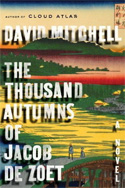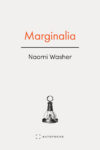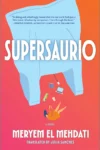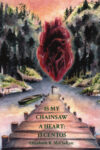by Michael Waldrep
Art is eating its own head. Imagine: scripted television series capture the supposed real lives of actors. Strains of pop music are said to be going through a nostalgic phase of yearning for the cartoon theme songs of twenty-five years faded. Movies seated in movies seated in movies. The self-referentiality of the novel, like all other media, has of course always existed, but in the last thirty years it has exploded to become in the eyes of many the common thread binding the flitting pages of contemporary literature. In spite of this, David Mitchell’s The Thousand Autumns of Jacob de Zoet is, simply, a story. Its contents—misunderstanding, love, isolation, and unintelligible beauty—are not unique, nor, arguably are they typically postmodern. They are serenely orchestrated: dabbed and restrained.
The apparent degree of historical accuracy taken in the exacting details of a pivotal moment in the reluctant relationship between Japan and Europe has been pointed to as a great defining characteristic and strength of this book. While I hesitate to join a group of reviewers that likely know as little about the parlance of eighteenth century Irishmen in the service of the Dutch in Asia as Dave Eggers, who reviewed the book for the New York Times, the impression of verisimilitude is, without a doubt, overwhelming.
That is, Mitchell has thoroughly developed a world that feels worthy of the trust that historical fiction demands. Of course, it is simple to wow the reader with ledgers and Japanese social custom, and to beg artistic license in cases of the supernatural. Where the line is drawn between rigorous factual retelling and the product of a proven, powerful imagination is a question the overwhelmingly positive reviews decline to raise, but, maybe, an unimportant one. Mitchell’s Japan is one we are welcome to inhabit, whether or not it transcribes accurately a place two hundred years and five thousand miles gone. The flourishes of his writing, especially the brief, evocative asides that pepper the text, those “filaments of rain” and “wasps of pain…[in the] stump of [a] brain” remind us why a young Englishman’s fictionalization of relatively unimportant events long buried is currently being discussed and adored worldwide.
And it’s a good story—one that keeps pages turning and space heaters running late into the night this winter. Mitchell borrows and refolds the best of genre fiction, as in his Cloud Atlas, avoiding purposeful pastiche or overt commentary, but reveling in the pleasure of words and narrative. The power of his novel lies not in its research, nor in any kind of experimental form, but in its pages, where I can find a small man facing down a large ship. And I need to know whether he lives or dies.
This post may contain affiliate links.








